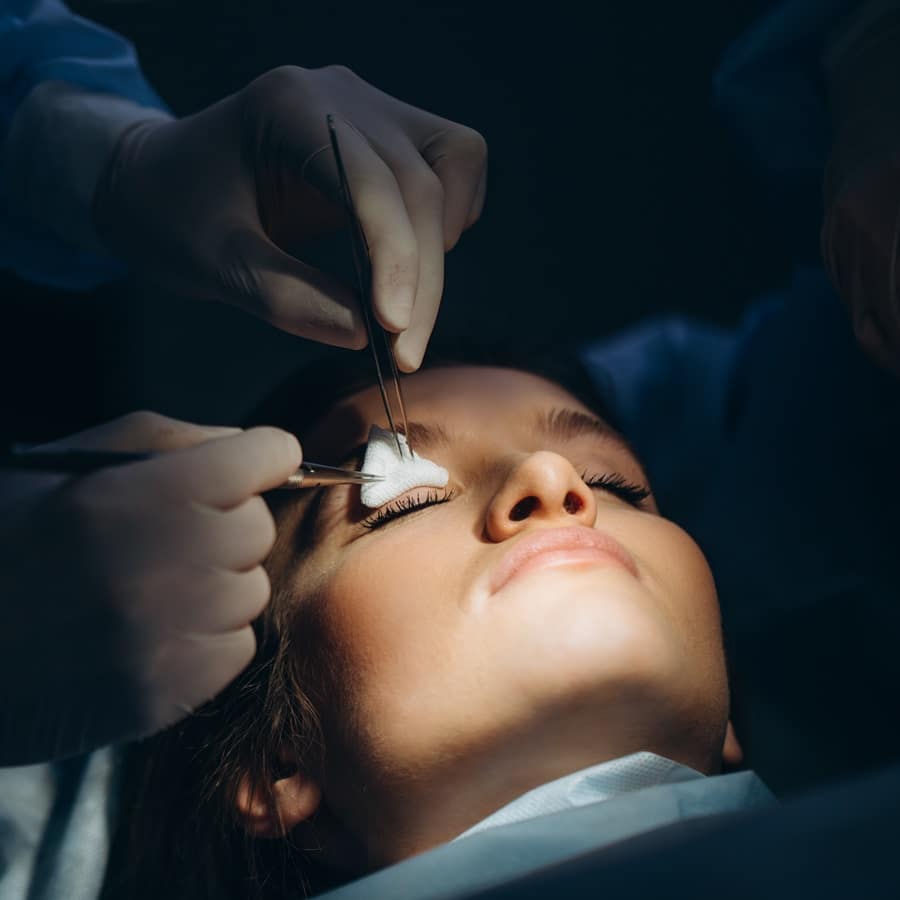Vision correction surgery has advanced dramatically over time, allowing people to attain clear vision while reducing their dependency on glasses or contact lenses. While LASIK has long considered the gold standard for many refractive surgery patients, a new method known as LAHayeSIK has emerged as a viable alternative with potential benefits. If you are considering vision correction surgery, you should first understand what LAHayeSIK is and whether you are a good candidate. In this blog, we will go over the details of LAHayeSIK, its unique perks, and the eligibility requirements for potential individuals.
What Is LAHayeSIK?
LAHayeSIK is an advanced vision correction procedure that combines elements of LASIK (laser-assisted in situ keratomileusis) and LASEK (laser epithelial keratomileusis). LAHayeSIK aims to improve safety, accuracy and visual outcomes compared to traditional LASIK techniques.
Benefits of LAHayeSIK:
1) Enhanced Safety:
LAHayeSIK prioritizes safety by reducing the risk of flap-related complications typically associated with traditional LASIK procedures. By preserving the corneal epithelium during the flap creation process, LAHayeSIK reduces the likelihood of issues such as flap dislocation or epithelial ingrowth. This emphasis on safety provides patients with peace of mind and confidence in the procedure.
2) Precise Customization:
One of the key benefits of LAHayeSIK is the ability to provide precise, customized treatment tailored to each patient’s individual needs. Using advanced technology and techniques, including wavefrontguided ablation and topography-guided treatments, surgeons can address a wide range of refractive errors with precision and predictability. This optimization ensures optimal visual results and minimizes the risk of under- or over-correction.
3) Faster Recovery:
LAHayeSIK promotes faster healing and recovery than traditional LASIK procedures. By preserving the corneal epithelium and minimizing epithelial disruption, LAHayeSIK reduces postoperative discomfort and accelerates visual recovery. Patients undergoing LAHayeSIK typically experience minimal downtime and can return to their normal activities sooner, allowing for an easier and more comfortable recovery process.
4) Reduced Risk of Complications:
LAHayeSIK reduces the likelihood of epithelial defects, flap-related issues, and other potential complications, resulting in a safer and more predictable result.
5) Versatility:
LAHayeSIK is appropriate for a variety of refractive problems, including myopia, hyperopia, and astigmatism. Its adaptability enables surgeons to address a wide range of vision correction demands with precision and efficiency, making it an appealing alternative for anyone looking for personalized therapy tailored to their specific requirements.
Eligibility for LAHayeSIK:
While LAHayeSIK offers many benefits, not everyone is a suitable candidate for this procedure. Eligibility for LAHayeSIK depends on several factors, including:
1) Refractive Error:
LAHayeSIK can effectively correct common refractive errors such as nearsightedness (myopia), farsightedness (hyperopia) and astigmatism. However, the severity of the refractive error and stability of the prescription are important considerations. Candidates for LAHayeSIK must have a stable prescription for at least one year prior to the procedure.
2) Corneal Thickness:
Adequate corneal thickness is critical to the safety and effectiveness of LAHayeSIK. Candidates must have enough corneal thickness to support the formation of a corneal flap and subsequent laser ablation. A full preoperative evaluation, including corneal pachymetry tests, will evaluate whether a candidate’s corneal thickness is appropriate for LAHayeSIK.
3) Overall Eye Health:
Candidates for LAHayeSIK should have good overall eye health, free from conditions such as corneal diseases, glaucoma, or cataracts. Any underlying eye conditions must be properly managed and stabilized before considering LAHayeSIK. Additionally, candidates should have realistic expectations about the potential risks and benefits of the procedure.
4) Age and General Health:
While LASIK is typically performed on individuals over the age of 18, LAHayeSIK may be suitable for a broader range of ages, including older adults. Candidates should be in good general health and free from conditions that could affect healing or increase the risk of complications.
Conclusion:
LAHayeSIK represents a significant advancement in vision correction surgery, providing superior safety, accuracy and visual results compared to traditional LASIK procedures. Combining elements of LASIK and LASEK, LAHayeSIK provides customized treatment tailored to each patient’s specific needs, with minimal risk of complications and a faster recovery. However, eligibility for LAHayeSIK depends on factors such as refractive error, corneal thickness, overall eye health, age, and general health. If you are considering LAHayeSIK, it is essential to consult with a qualified refractive surgeon who can assess your candidacy and provide personalized recommendations based on your individual needs and goals.







